Experiential Marketing
The Business of Test Drives
So, you have created a promising pipeline of prospects; people who align with your commercial strategy and have, at least, a passing interest in what you offer. The next challenge is to warm them up further, nudging them from mildly intrigued to seriously interested.
One of the most effective ways to do this is through experiential marketing, otherwise known as getting them to an event. The principle is simple, but it used far less often than it should be: let them experience your firm in action.
Think of it as the corporate equivalent of a test drive. A prospect can read all the reviews, consume all your thought leadership papers, watch the promotional videos, and listen to a slick pitch, but none of these are as convincing as getting behind the wheel.
To illustrate the point, consider a personal anecdote. Many years ago, when I was just starting out as a motorcyclist, I strolled into a Honda dealership to inquire about a test ride. They declined, on the grounds that I lacked experience. So I went to BMW’s Park Lane showroom instead, where they promptly handed me the keys to a top-of-the-range touring bike, for the entire weekend. I am now on my sixth BMW.
The lesson? Experience builds commitment in a way that marketing materials simply cannot.
A well-run event serves the same function. It allows prospective clients to:
- Meet you and selected colleagues
- Hear what you have to say – thus providing evidence of your expertise
- And, critically, see that you are competent and pleasant human beings.
This final point should not be underestimated. Clients, particularly in professional services, want to work with people they like. An event is an opportunity to demonstrate both expertise and basic decency which, in many industries, is enough to set you apart.
They can also see the company that you keep, and if you have a high-quality guest list, that could be helpful.
So, if you want to turn warm-ish prospects into hot ones, get them into the showroom and hand them the keys.
The process for effective events is simple:
- Pick a topic your audience cares about (see below)
- Gather material (research, interviews, or analysis).
- Compile a compelling report or white paper.
- Share your insights—via LinkedIn, newsletters, and direct outreach.
- Host an event—breakfast briefing, panel discussion, webinar, etc
- Follow up—not with a hard sell, just a conversation.
- Repeat… endlessly.
Events come in all shapes and sizes. Some, like JFDI’s annual New Business Barometer research (something I highly recommend), involve a few hundred people and an unveiling of industry research. Others, like breakfast workshops for 6-10 people, are more low-key but highly targeted. Both approaches work.
Other possibilities:
- Panel discussions (good if you can attract a heavyweight speaker).
- Breakfast/lunch/dinner roundtables (clients enjoy eating).
- Conferences (either hosting or speaking at them).
- Small, curated networking gatherings
Lunchtime webinars with live Q&A to supplement in-person events are also worth considering, especially if you are dealing with folks in different time zones, as you can record them and make them available, later.
You can also boost your media credentials at the same time as impressing would-be clients, by publish a series of papers, written by journalists with you topping and tailing them, aimed at the concerns of very large potential clients. You would hold invitation-only (ie no substitutions) dinners to discuss these. We commissioned the a former editor of the FT to do this for my old firm.
In terms of topics, I think they come in five flavours:
- Zeitgeist – matters that seem to have attracted widespread interest (e.g. AI panic)
- Evergreen issues – these are topics that are perpetually of concern (e.g. hiring woes)
- Emerging trends – this is one where you notice that a few clients have started to mention a new concern. Chances are, it’s something others may become interested in soon, too.
- Original insight – these are matters that your professionalism leads you to believe will be an issue, but others have not quite spotted it, yet.
- Piggybacking – this is where you notice something produced by someone else, and improve on it with your knowledge and make it your own (e.g. riffing off McKinsey’s latest industry thesis)
Whatever the format, the rules remain the same:
- Flawless execution—guests will judge you not just on content but on whether the IT works, whether the coffee arrives on time, and whether they feel looked after. If anything goes wrong, it will count against you (even if it wasn’t your fault).
- The topic must be compelling—if it isn’t, people won’t come.
- Crucially, your firm must actively contribute—simply organising an event is not enough. You should have a major, if not the major, speaking role.
- A good ratio is one in-house person per two guests, ensuring attendees meet enough of your team to get a feel for the firm. Clients should leave thinking, “These people know what they’re talking about and I liked them.”
The goal is not mass-market reach but high-quality engagement with the right audience. Done properly, marketing is not a cost—it is an investment. One that builds a predictable, scalable pipeline of new business.

